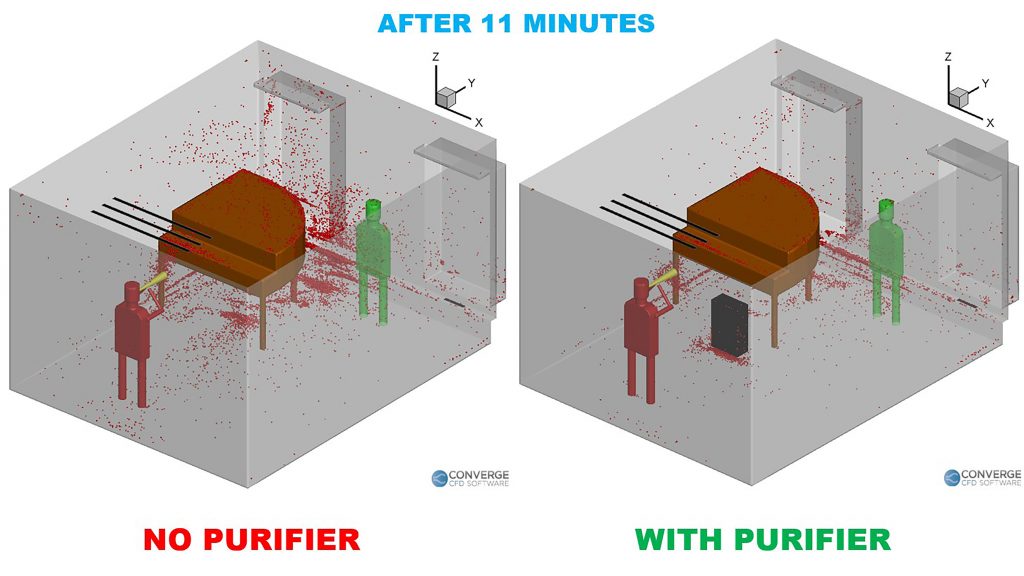From the Journal: Physics of Fluids
WASHINGTON, March 9, 2021 — The University of Minnesota School of Music was concerned about one-on-one teaching during the COVID-19 pandemic and wondered if it should supplement its ventilation system with portable HEPA air purifiers.

So, school officials reached out to Suo Yang, a professor within the College of Science and Engineering, and his team to figure it out. In Physics of Fluids, from AIP Publishing, Yang and the researchers describe their work to predict how virus particles spread within a music classroom.
“The airborne transmission of COVID-19 through droplets or droplet nuclei can be modeled as a typical particle-laden flow, and simulation work needs to accurately capture the movement of particles within the turbulent flow environment,” said Yang. “Particle deposition onto the walls and other surfaces also needs to be captured accurately, and we wanted to explore whether particles are trapped in some recirculation zones, ventilated out, or removed by an air purifier.”
Their simulations suggest that a HEPA air purifier should be placed directly in front of the person or instrument expelling aerosols and located away from other people who are to be protected within the room.
The researchers’ goal was a ventilation rate of 288 cubic meters per hour, per World Health Organization guidelines, for each person within the room. To their knowledge, this is the most comprehensive investigation of using HEPA air purifiers to combat COVID-19.
“The key thing is that while portable purifiers can be very helpful, their placement is critical,” said Yang.
It is absolutely critical to not spread aerosols further by inducing a very dispersive flow, according to Sai Ranjeet Narayanan, a graduate research assistant working with Yang.
One big surprise for the researchers was that portable HEPA air purifiers reduce in-air aerosols so much faster than just ventilation — offering orders of magnitude higher aerosol removal compared to not using a purifier.
If the flow rate of the HVAC system is known, this work can serve as a guideline for the size and number of portable purifiers needed, as well as where to place them.
“Our work also provides a guideline for how long of a break between classes is necessary to ensure the safety of the next class, which is about 25 minutes for this case,” said Yang.
“And it provides an analytic function, found to be a linear function, to make predictions for the aerosol removal, deposition, or suspension rate in almost any scenario: breathing, speaking, singing, coughing, sneezing, different wind instruments, with and without masks.”
In the future, “we plan to model larger domains with more people, such as bands, orchestras, or any group gathering,” Narayanan said. “And we may also compare the performance of different types of purifiers.”
###
For more information:
Larry Frum
media@aip.org
301-209-3090
Article Title
Authors
Sai Ranjeet Narayanan and Suo Yang
Author Affiliations
University of Minnesota
